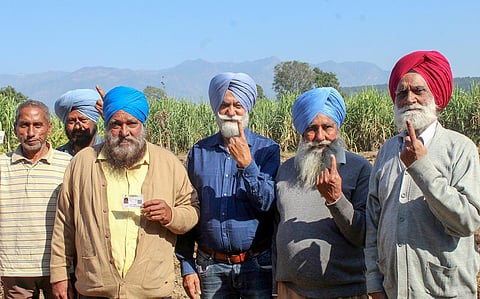

In a few weeks from now, the results of the Himachal Pradesh assembly elections will be out. Normally, regimes change every five years in the state. This time, the Congress is banking on a promise to come back to power. The promise is that the party will restore the old pension scheme for all retired government employees.
It seems to have struck a chord with voters. The Congress has already "restored" the old pension scheme in the two states that it rules: Chattisgarh and Rajasthan.
Even the Aam Aadmi Party government in Punjab has decided to bring back the old pension scheme. Under the old pension scheme, government employees are guaranteed a lifetime pension, which is 50% of the last drawn basic salary, with dearness allowance added every six months based on inflation. It sounds very citizen-friendly.
But here is the catch. Pension payments already account for almost 80% of the total tax revenues generated by Himachal Pradesh on its own. If the Congress wins and implements the old pension scheme as promised, the pension bill alone will eat up the tax revenues of the state.
There could be more polite ways of describing this move. But quite simply, it is reckless populism that will wreck the fiscal health of the state for at least one generation.
Worse, it is elitist populism gone rogue because the beneficiaries will all have per capita incomes that are way above the poverty level. Together, they don't constitute even 10% of the population of the state. This single gesture will benefit relatively better-off citizens at the cost of the genuinely poor as the state will have no resources left to implement targeted welfare schemes for them.
Himachal Pradesh is just one manifestation of how fiscal prudence of the last two decades is being squandered away by irresponsible politics in the name of welfare. If the genuinely poor and deprived were the prime beneficiaries of such largesse, one could understand the logic that welfare sometimes must triumph over fiscal prudence and financial discipline. But that's not the case. Such freebies are being doled out or promised indiscriminately by all political parties.
Take some examples.
Electricity consumers in Delhi get free power up to 200 units per month. There is no income criteria. There has been a tweak in the policy now but even a millionaire can still consumer free power.
Then there is the central government giving Rs 6000 per year to every land-owning farmer in India, no questions asked. The Telengana government had preempted this gesture by giving Rs 10000 per acre to every land-owning farmer irrespective of farm size. So, a rich farmer with 20 acres of land will get Rs 2 lakh a year just like that; in addition to her income from farming and other allied activities.
At a basic level, all this negates the basics of ethical welfarism.
If the Indian state was as rich as welfare-focused Scandinavian countries, such largesse could be explained away. But it is not. Most state governments report a perilous state of finances and often don't have money to pay salaries to school teachers and nurses. And they are riddled with debt.
Take Punjab where the government is promising an El Dorado of welfarism.
A report by the Sixth Punjab Finance Commission released in September 2022 says that the Punjab exchequer already "enjoys" a debt that is more than 48% of the state GDSP. The report forecasts that the situation will become even more grim next year as debt will rise from Rs 2.84 lakh crores in 2021-22 to Rs 3.05 lakh crores in the current financial year. One can well imagine the consequences once the government unleashes the old pension scheme.
There is worse.
The "official" debt levels hide more than they reveal. For instance, the Power Finance Corporation estimates that the accumulated debt of state electricity boards in 2021 was Rs 5.14 lakh crores and accumulated losses were Rs 5.07 lakh crores. This is despite the Uday scheme under which tens of thousands of crores have been written off.
Apart from electricity, there are many other "freebies" that will sooner or later, like chickens, come home to roost. To insist on bringing back the old pension scheme under such circumstances is as irresponsible as it can get.
Ironically, both the NDA and UPA regimes have supported pension reforms.
The NDA government under Atal Bihari Vajpayee brought in a new pension scheme where government employees were required to contribute every month to their old-age pension fund. The UPA government led by Dr Manmohan Singh vigorously implemented the new pension scheme.
This was applauded by economists and analysts as a welcome bi-partisan move to tackle the fiscal crisis that was threatening to spiral out of control. Despite the new pension scheme, the outflow on account of pensions for the central government ballooned from Rs 3722 crores in 1991 to Rs 2.08 lakh crores. The outflow for states rose from Rs 3800 crores to Rs 3.86 lakh crores.
It is then anybody's guess what will happen if irresponsible politics leads to a comeback for the old pension scheme.
(Sutanu Guru is Executive Director, C Voter Foundation)